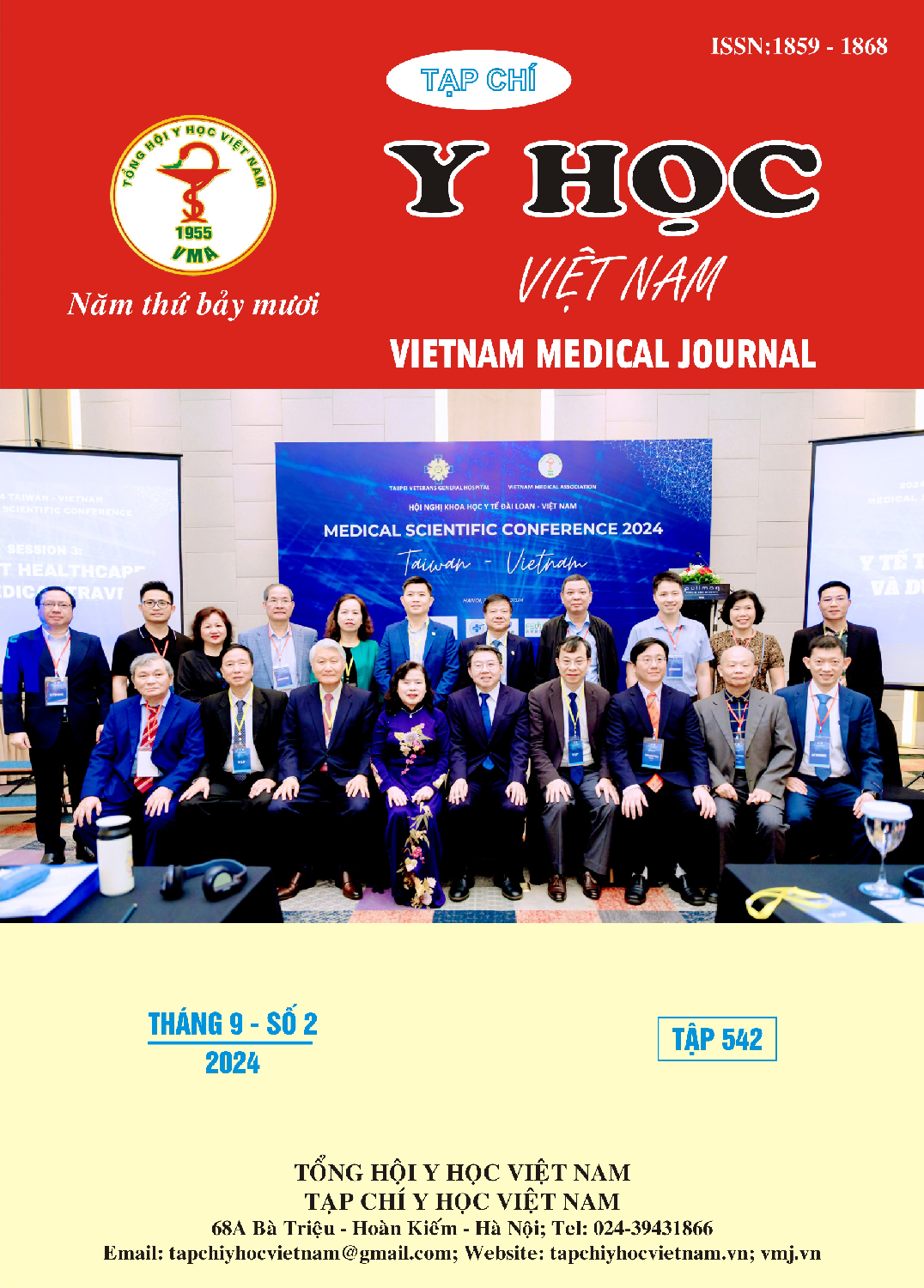CHARACTERISTICS AND ADHERENCE STATUS OF GASTRIC AND DUODENAL ULCER PATIENTS AT MILITARY CENTRAL HOSPITAL 108
Main Article Content
Abstract
Objective: Gastric and duodenal ulcers (GDU) are prevalent gastrointestinal disorders known for their recurrence. Effective treatment relies heavily on patient adherence, yet adherence rates and follow-up behaviors are often overlooked. This study aims to investigate the demographic and adherence characteristics of GDU patients at Military Central Hospital 108. Materials and Methods: A cross-sectional descriptive study analyzed 356 GDU patients with clinical symptoms randomly selected based on endoscopy results and outpatient records from August 2023 to May 2024. Patients were considered adherent if their MMAS-8 score was ≥ 6 points and were compliant with follow-up if they attended re-examinations within 12 weeks. General demographics (age, gender), socioeconomic factors (occupation, health insurance), and clinical features (inflammation, ulceration, etiology) were recorded and statistically analyzed. Results: The average age was 51.4 ± 12.8 years, male-to-female ratio was 2:1. In the study group, 69.1% had a history of GDU, 86% had concurrent chronic diseases, and 14.9% lived alone. 53.4% had attained higher education, 40.2% were military or civil servants, and 54.2% resided and worked in Hanoi. Self-payment was provided to 175 out of 356 patients. Common clinical symptoms included dyspepsia (56.7%), abdominal pain (49.4%), and gastrointestinal disorders (34.8%). Most ulcers were found in the stomach (97.8%), primarily caused by alcohol consumption (39.3%) and Helicobacter pylori infection (33.1%). The treatment adherence rate was 87.6%, with a mean MMAS-8 score of 7.67 ± 0.53. Conversely, the follow-up examination rate was 39.9%, mainly delayed due to stabilized health conditions (84.6%). Conclusion: GDU patients demonstrate high medication adherence but low follow-up examination post-treatment due to perceived health stability. Public awareness campaigns highlighting the benefits of post-treatment check-ups are crucial to optimizing treatment effectiveness.
Article Details
Keywords
Tuân thủ điều trị, tuân thủ tái khám, viêm loét dạ dày tá tràng, bệnh viện TWQĐ 108
References
2. Đào Nguyên Khải, Vũ Văn Khiên, Phạm Thị Thu Hồ, Nguyên nhân, mức độ và hình ảnh nội soi ở bệnh nhân loét dạ dày tá tràng có biến chứng chảy máu tiêu hóa. Tạp chí Y dược lâm sàng 108, 2018. 13(08).
3. Đỗ Thị Hiến, Phạm Trường Sơn, Lê Thị Bình, Đánh giá sự tuân thủ điều trị ở bệnh nhân tăng huyết áp được điều trị ngoại trú tại Phòng khám Nội Tim mạch - Bệnh viện Trung ương Quân đội 108. Tạp chí Y dược lâm sàng 108, 2020. 15(Số đặc biệt tháng 11).
4. Lê Thị Xuân Thảo, et al., Tuân thủ điều trị tiệt trừ Helicobacter Pylori ở bệnh nhân viêm loét dạ dày tá tràng. Tạp chí Y học thành phố Hồ Chí Minh, 2017. 21(02).
5. Nguyễn Thị Loan, et al., Đánh giá không tuân thủ dùng thuốc và các yếu tố liên quan ở người bệnh ung thư gan điều trị ngoại trú tại Bệnh viện Trung ương Quân đội 108. Tạp chí Y dược lâm sàng 108, 2021. 16(3): p. 148-153.
6. Trần Ngọc Huy, Phạm Việt Mỹ, Lê Hữu Phước, Nghiên cứu đặc điểm lâm sàng và tình hình tuân thủ điều trị bệnh lý viêm loét dạ dày tá tràng tại bệnh viện đại học y dược Shing mark. Tạp chí Y học Việt Nam, 2024. 535(02): p. 137-140.
7. Eusebi, L.H., R.M. Zagari, F. Bazzoli, Epidemiology of Helicobacter pylori infection. Helicobacter, 2014. 19 Suppl 1: p. 1-5.
8. Morisky, D.E., et al., Predictive validity of a medication adherence measure in an outpatient setting. J Clin Hypertens (Greenwich), 2008. 10(5): p. 348-54.
9. WHO, Methods and data sources for global burden of disease estimates. Geneva: World Health Organization, 2020.


